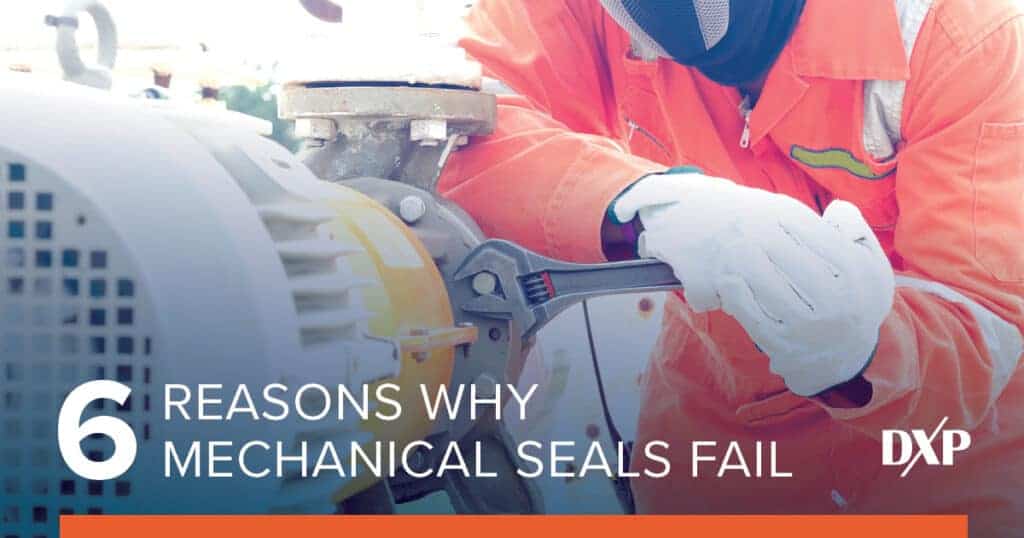Mechanical seals are critical for any pump system. They prevent catastrophic leaks and contain the extreme pressures and temperatures caused during the pumping process. A good mechanical seal properly installed and maintained can provide many key benefits. The pump equipment will operate more reliably and efficiently. There is less risk of process fluids leaking out of the pump system, which means less wasted product and reduced environmental concerns if the materials are hazardous.
A mechanical seal can fail and lead to pump downtime for numerous reasons. Below are six of the most common causes of mechanical seal failure:
- Incorrect Seal Choice
This can happen often. An operator upgrades to a new mechanical seal or replaces the original seal after it is worn out. Unfortunately, the seal isn’t adequate for the pump equipment and the process fluid being pumped. Mechanical seal upgrades and custom fittings are recommended, especially with more demanding pump applications. However, make sure to choose and install the correct seal for the job.
- Poor Seal Installation
You may have the best seal for the application, but problems can occur if it is not installed properly. Take the necessary steps for fitting, lubricating, tightening, and testing any new mechanical seal before it is put into full operation. This will avoid seal failures as a result of improper installation.
- Faulty Equipment
In some cases, the seal itself is inferior. Most mechanical seal manufacturers have great quality control, but a product defect can go undetected. Even the slightest imperfection can cause significant problems. This is why it’s a good idea to inspect each new seal carefully and test it after installation to ensure it is working correctly.
- General Wear and Tear
Mechanical seals are the most common cause of pump failure. They tend to wear out faster than other pump components. They need to be inspected regularly and replaced once they start showing any signs of wear that hinder pump performance. Seal management is a vital part of any pump operator’s maintenance plan. It should always be a top priority, especially with more extreme pumping applications. Examples include difficult operating environments, hazardous or corrosive fluids, high temperatures, high flow rates, high suction heads, and high pressures.
- Outside Factors
In some cases the mechanical seal is not to blame. It can fail because of some other fault in the pump system. A shaft misalignment can increase vibration and create excessive wear on the seal. A bearing can wear out and fail, or the lubrication can become contaminated. One equipment problem can snowball. Often the mechanical seal takes the brunt of the extra stress. If your mechanical seals are failing more often than they should, inspect all of the equipment and components thoroughly. Other concerns may need addressing. This is how you keep your equipment healthy and your pump system running efficiently.
- Operator Error
Some of the issues above can fall under this category, including an incorrect mechanical seal choice, poor seal installation, and lack of proper maintenance. Equipment failures can be frustrating. Most of the time, the equipment and specific components like the mechanical seal are to blame. In other situations, you may need to look in the mirror and do everything you can to keep your equipment working correctly. Don’t push pumps beyond their capabilities. Use the equipment as designed, and maintain it properly. Consider customizations and upgrades for extreme pumping applications.
These are some of the most common reasons why mechanical seals and other pump system components fail. For all of your pump management needs, like seal upgrades, installation, maintenance, repairs, and training, contact the team at DXP Pacific today.

